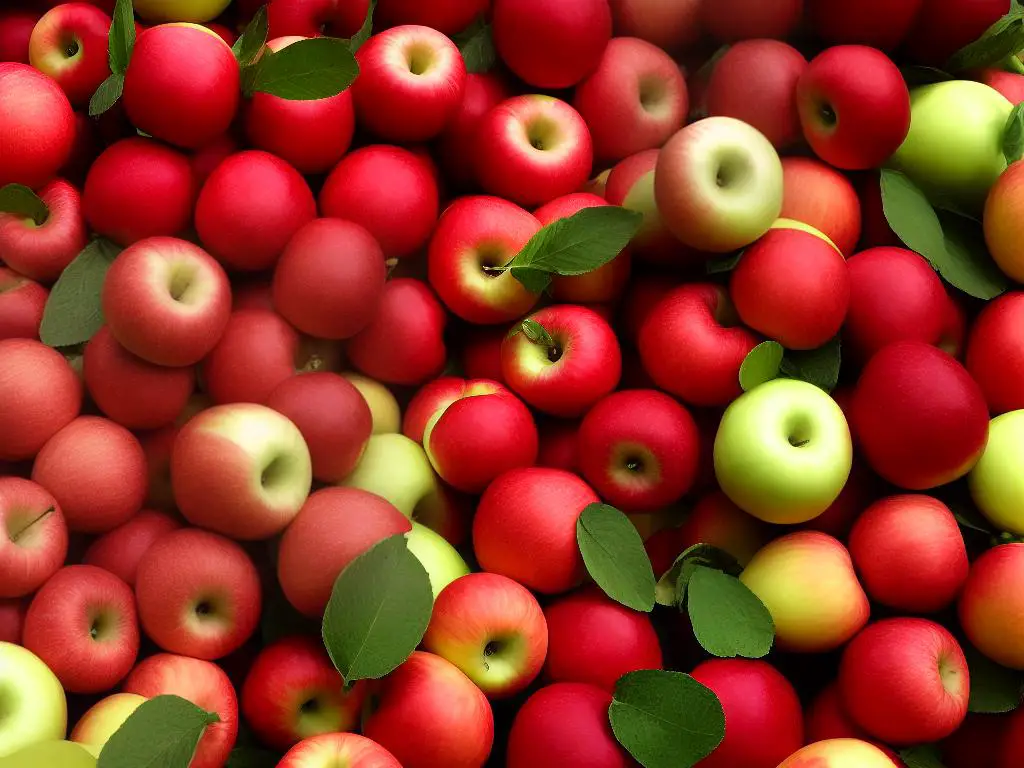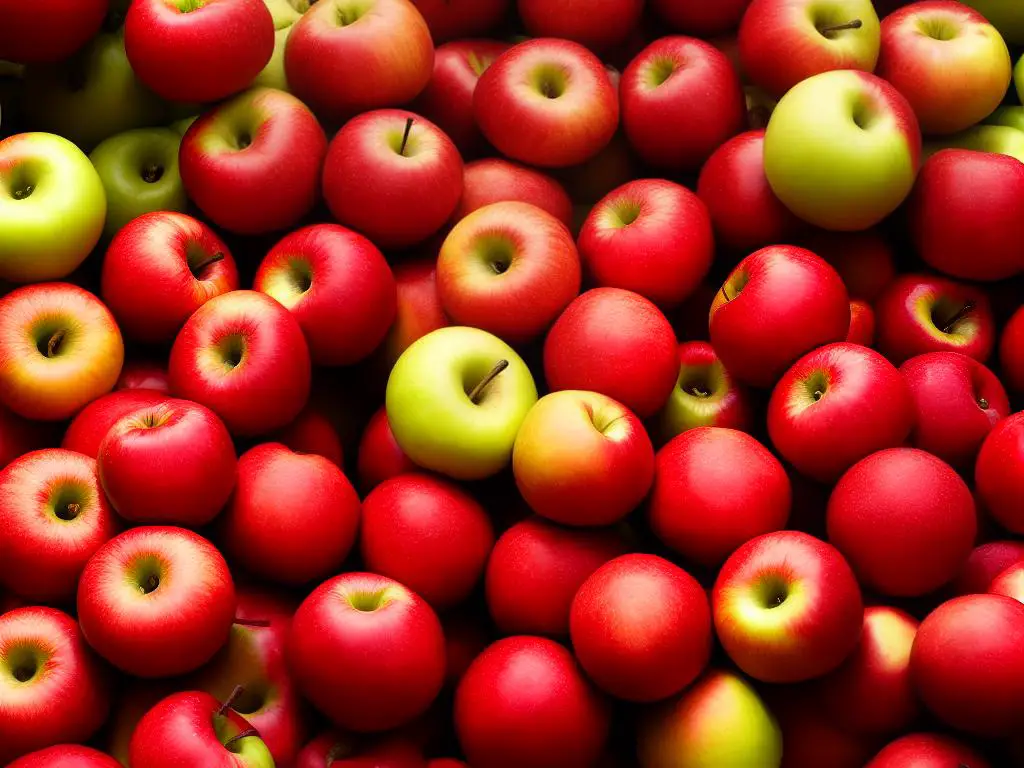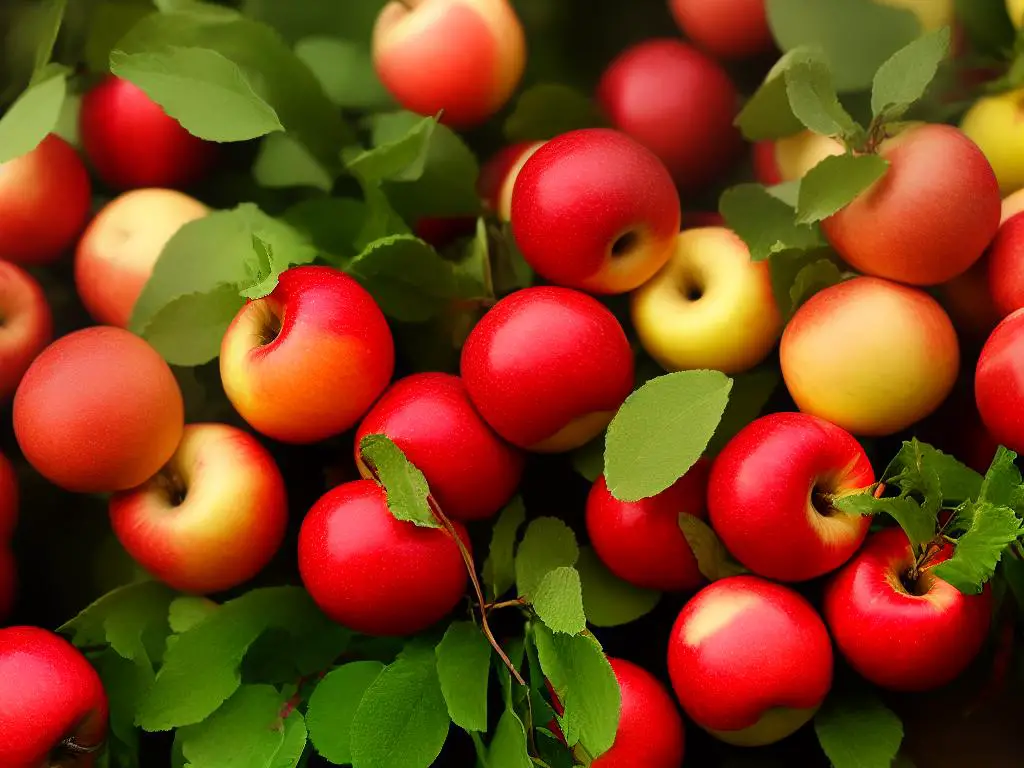Apples are not just apples, particularly if you’ve ever tasted a Melrose apple, an apple variety distinguished above typical apples with a rich history and uniquely pleasing characteristics. The Melrose apple, while not as universally recognized as the ubiquitous Red Delicious, holds a dominant presence in apple lore, tickling palates with its distinctive taste profile and nutrient-rich benefits. Reflecting on its origin, journey, physical attributes, uses, and benefits, it is certainly interesting to explore the comprehensive lifecycle and significant impact of Melrose apples.
Origin and History of Melrose Apples
Melrose Apples
Melrose apples, an exclusive and high-quality variety, were developed at the Ohio Agricultural Experiment Station in Wooster, Ohio, USA. Born from the cross-breeding of the popular apple varieties – Jonathan and Delicious, Melrose apples were officially introduced into the market in 1944. Since known for their excellent eating quality, they fast gained popularity in the domestic market, and Ohio even dubbed Melrose as its official state apple in 1953.
Origins and Cultivation
The heritage of Melrose apples lies in the mid-western valleys of the United States, in areas renowned for their long, toasty summers and crisp, cold winters. The initial cultivation was concentrated within the state boundaries of Ohio. But, the popularity of this unique cultivar led to a progressive expansion of its cultivation across the United States, and eventually, around the globe. Its exceptional flavor, enticing texture, and ability to adapt to a variety of soil types made it an international favorite among apple aficionados. While Melrose apples might not enjoy the same brand recognition as their parent varieties, their inherent disease resistance and versatility in terms of soil compatibility make them a sought-after choice for commercial growers and home garden enthusiasts alike.

Characteristics of Melrose Apples
Characteristics of Melrose Apples
Melrose apples garner popularity for their harmonious blend of attributes. The texture is satisfyingly crunchy, and the inside of the apple is juicy dripping with flavor. These apples invariably strike a perfect balance between sweetness and tartness. An average Melrose apple is often larger than most other varieties and sports a thick, coarse skin. The skin is predominantly painted with an appealing reddish-yellow hue, with the reddish tones becoming more prominent as the apple ripens and some green undertones shining through.
Growth Process
Melrose apples follow a fascinating growth process. The apple trees start to produce buds in early spring and these gradually develop into flowers that, if pollinated successfully, will become small apple fruits. As the season progresses and goes into summer, these apples grow in size, taking on their distinctive features. They are typically harvested in the late Fall when they are fully ripe and a deep reddish-yellow.
Melrose Apples: All You Need to Know
Revered for their versatility and longevity, Melrose apples continue to win the hearts of many. Born from a cross-breeding between the Red Delicious and Jonathan apples, they carry the finest characteristics of their parent fruits. An impressive feature of Melrose apples is their ability to remain fresh even after a considerable period of storage, without any reduction in their quality.

Uses and Benefits of Melrose Apples
Culinary Versatility and Health Benefits of Melrose Apples
The uniqueness of Melrose apples expands beyond their storage capacity to their richness in flavor, with a balance of tartness and sweetness that lends itself to a variety of culinary applications. Their sturdy texture, even after cooking, makes them an excellent choice for a wide array of dishes from pies, tarts, and ciders to mouth-watering apple crisps.
The value of Melrose apples extends to their nutritional profile as well. They are a reliable source of dietary fiber, promoting digestive health and a feeling of satiety. In addition to this, they are abundant in Vitamin C, an antioxidant known for enhancing immunity and contributing to healthier skin. Melrose apples also provide us with other essential nutrients such as potassium and traces of Vitamin B, both significant contributors to overall health. Given that they are low in calories but high in texture and juice, they work beautifully as an appetizing and maintainable snack for those mindful of their weight.

Melrose apples are more than just a delicacy to be savored for their flavor; they are a deep-rooted part of history, a versatile ingredient in gastronomy, and nutritious fruit beneficial to health. By exploring their rich past, understanding their unique characteristics, and recognizing their diverse uses and benefits, it becomes clear that Melrose apples have a unique position in the grand tapestry of fruit varieties. They exemplify how simple fruits can be woven through the fabric of societies across centuries and continents, standing testament to the profound importance and unending intrigue of nature’s produce.